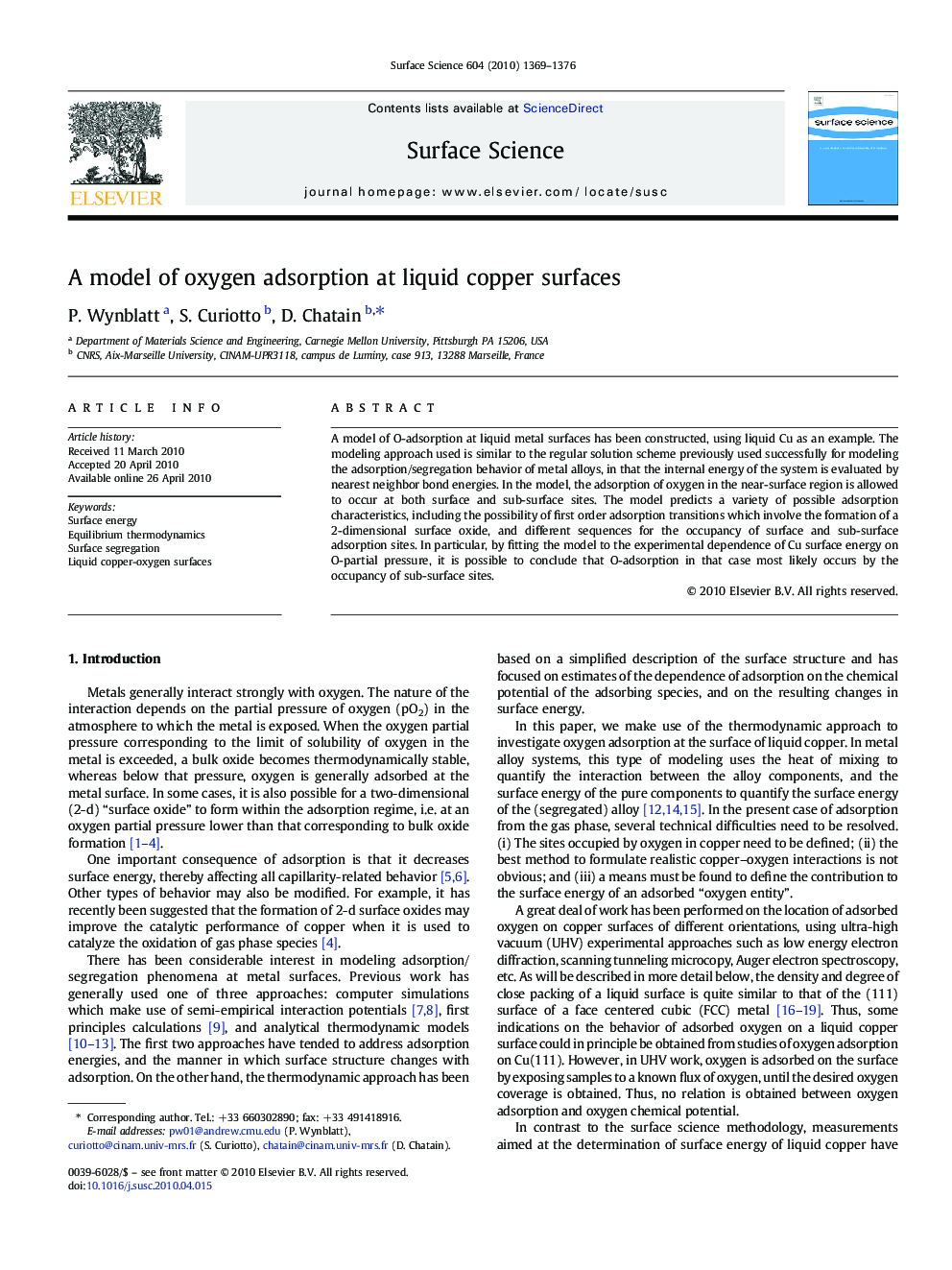| Article ID | Journal | Published Year | Pages | File Type |
|---|---|---|---|---|
| 5423062 | Surface Science | 2010 | 8 Pages |
Abstract
A model of O-adsorption at liquid metal surfaces has been constructed, using liquid Cu as an example. The modeling approach used is similar to the regular solution scheme previously used successfully for modeling the adsorption/segregation behavior of metal alloys, in that the internal energy of the system is evaluated by nearest neighbor bond energies. In the model, the adsorption of oxygen in the near-surface region is allowed to occur at both surface and sub-surface sites. The model predicts a variety of possible adsorption characteristics, including the possibility of first order adsorption transitions which involve the formation of a 2-dimensional surface oxide, and different sequences for the occupancy of surface and sub-surface adsorption sites. In particular, by fitting the model to the experimental dependence of Cu surface energy on O-partial pressure, it is possible to conclude that O-adsorption in that case most likely occurs by the occupancy of sub-surface sites.
Related Topics
Physical Sciences and Engineering
Chemistry
Physical and Theoretical Chemistry
Authors
P. Wynblatt, S. Curiotto, D. Chatain,
